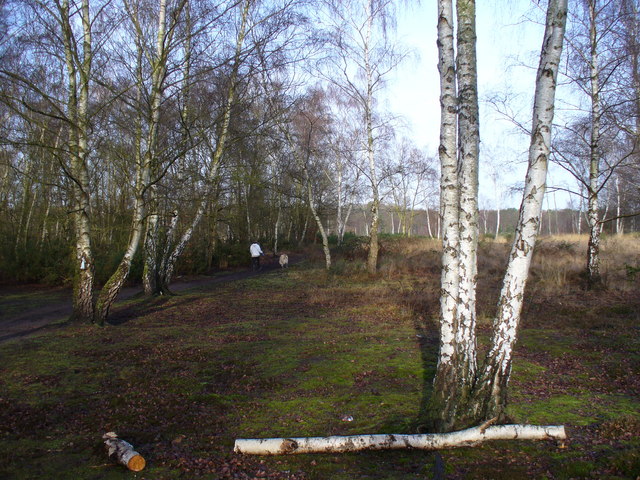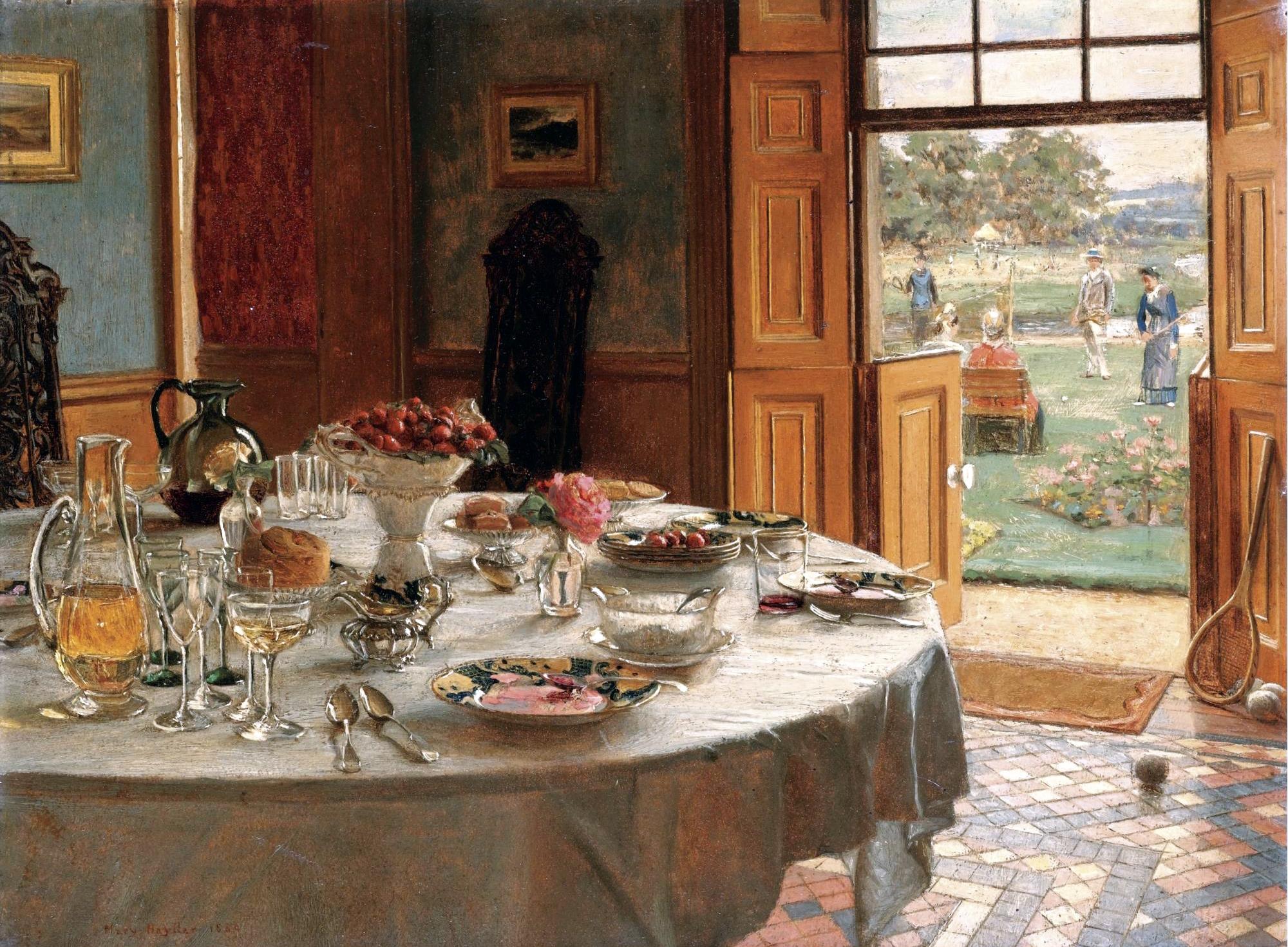|
Jessica Hayllar
Jessica Ellen Hayllar (16 September 1858 – 7 November 1940) was a British artist and painter. Hayllar was born in London and was the eldest daughter of the nine children born to Ellen Phoebe Cavell (1827-1899) and her husband James Hayllar (1829-1920). The family lived at Mecklenburgh Square in London and also rented a country house in Suffolk for several months each year before moving to a large house, Castle Priory, by the River Thames, Thames at Wallingford, Oxfordshire, Wallingford, then in Berkshire. Hayllar and her four sisters attended a day school in Gower Street, London, Gower Street and all were given art lessons by their father, who was himself a well-regarded painter. Jessica Hayllar became the most prolific artist among the Hayllar offspring, although her sister Edith Hayllar, Edith also achieved some recognition. Jessica Hayllar exhibited at the Royal Academy in London regularly between 1879 and 1915 and also had works shown at the Society of British Artists, wit ... [...More Info...] [...Related Items...] OR: [Wikipedia] [Google] [Baidu] |
Worplesdon
Worplesdon is a village NNW of Guildford in Surrey, England and a large dispersed civil parish that includes the settlements of: Worplesdon itself (including its central church area, Perry Hill), Fairlands, Jacobs Well, Rydeshill and Wood Street Village, all various-sized smaller settlements, well-connected by footpaths and local roads. Its area includes Whitmoor Common, which can be a collective term for all of its commons. History Early history South of Broad Street, east of Wood Street Village on a farm in Broad Street Common are ruins of a Roman Villa – for further details see the Guildford article, as it is directly by the major town's western edge however in this parish. Worplesdon has a Grade I C of E church, St Mary's with a 13th-century chancel and later additions. Worplesdon's single manor appears in Domesday Book of 1086 as ''Werpesdune'' held by Turald (Thorold) from Roger de Montgomery. Its domesday assets were: 6½ hides; a church, 9 ploughs, a mill wor ... [...More Info...] [...Related Items...] OR: [Wikipedia] [Google] [Baidu] |
Walker Art Gallery
The Walker Art Gallery is an art gallery in Liverpool, which houses one of the largest art collections in England outside London. It is part of the National Museums Liverpool group. History of the Gallery The Walker Art Gallery's collection dates from 1819 when the Liverpool Royal Institution acquired 37 paintings from the collection of William Roscoe, who had to sell his collection following the failure of his banking business, though it was saved from being broken up by his friends and associates. In 1843, the Royal Institution's collection was displayed in a purpose-built gallery next to the Institution's main premises. In 1850 negotiations by an association of citizens to take over the Institution's collection, for display in a proposed art gallery, library and museum, came to nothing. The collection grew over the following decades: in 1851 Liverpool Town Council bought Liverpool Academy's diploma collection and further works were acquired from the Liverpool Society fo ... [...More Info...] [...Related Items...] OR: [Wikipedia] [Google] [Baidu] |
Painters From London
Painting is the practice of applying paint, pigment, color or other medium to a solid surface (called the "matrix" or "support"). The medium is commonly applied to the base with a brush, but other implements, such as knives, sponges, and airbrushes, can be used. In art, the term ''painting ''describes both the act and the result of the action (the final work is called "a painting"). The support for paintings includes such surfaces as walls, paper, canvas, wood, glass, lacquer, pottery, leaf, copper and concrete, and the painting may incorporate multiple other materials, including sand, clay, paper, plaster, gold leaf, and even whole objects. Painting is an important form in the visual arts, bringing in elements such as drawing, composition, gesture (as in gestural painting), narration (as in narrative art), and abstraction (as in abstract art). Paintings can be naturalistic and representational (as in still life and landscape painting), photographic, abstract, narrative, s ... [...More Info...] [...Related Items...] OR: [Wikipedia] [Google] [Baidu] |
19th-century English Women Artists
The 19th (nineteenth) century began on 1 January 1801 ( MDCCCI), and ended on 31 December 1900 ( MCM). The 19th century was the ninth century of the 2nd millennium. The 19th century was characterized by vast social upheaval. Slavery was abolished in much of Europe and the Americas. The First Industrial Revolution, though it began in the late 18th century, expanding beyond its British homeland for the first time during this century, particularly remaking the economies and societies of the Low Countries, the Rhineland, Northern Italy, and the Northeastern United States. A few decades later, the Second Industrial Revolution led to ever more massive urbanization and much higher levels of productivity, profit, and prosperity, a pattern that continued into the 20th century. The Islamic gunpowder empires fell into decline and European imperialism brought much of South Asia, Southeast Asia, and almost all of Africa under colonial rule. It was also marked by the collapse of the large S ... [...More Info...] [...Related Items...] OR: [Wikipedia] [Google] [Baidu] |
19th-century English Painters
The 19th (nineteenth) century began on 1 January 1801 ( MDCCCI), and ended on 31 December 1900 ( MCM). The 19th century was the ninth century of the 2nd millennium. The 19th century was characterized by vast social upheaval. Slavery was abolished in much of Europe and the Americas. The First Industrial Revolution, though it began in the late 18th century, expanding beyond its British homeland for the first time during this century, particularly remaking the economies and societies of the Low Countries, the Rhineland, Northern Italy, and the Northeastern United States. A few decades later, the Second Industrial Revolution led to ever more massive urbanization and much higher levels of productivity, profit, and prosperity, a pattern that continued into the 20th century. The Islamic gunpowder empires fell into decline and European imperialism brought much of South Asia, Southeast Asia, and almost all of Africa under colonial rule. It was also marked by the collapse of the la ... [...More Info...] [...Related Items...] OR: [Wikipedia] [Google] [Baidu] |
1940 Deaths
Year 194 ( CXCIV) was a common year starting on Tuesday (link will display the full calendar) of the Julian calendar. At the time, it was known as the Year of the Consulship of Septimius and Septimius (or, less frequently, year 947 ''Ab urbe condita''). The denomination 194 for this year has been used since the early medieval period, when the Anno Domini calendar era became the prevalent method in Europe for naming years. Events By place Roman Empire * Emperor Septimius Severus and Decimus Clodius Septimius Albinus Caesar become Roman Consuls. * Battle of Issus: Septimius Severus marches with his army (12 legions) to Cilicia, and defeats Pescennius Niger, Roman governor of Syria. Pescennius retreats to Antioch, and is executed by Severus' troops. * Septimius Severus besieges Byzantium (194–196); the city walls suffer extensive damage. Asia * Battle of Yan Province: Warlords Cao Cao and Lü Bu fight for control over Yan Province; the battle lasts for over 100 ... [...More Info...] [...Related Items...] OR: [Wikipedia] [Google] [Baidu] |
1858 Births
Events January–March * January – **Benito Juárez (1806–1872) becomes Liberal President of Mexico. At the same time, conservatives install Félix María Zuloaga (1813–1898) as president. **William I of Prussia becomes regent for his brother, Frederick William IV, who had suffered a stroke. * January 9 ** British forces finally defeat Rajab Ali Khan of Chittagong ** Anson Jones, the last president of the Republic of Texas, commits suicide. * January 14 – Orsini affair: Felice Orsini and his accomplices fail to assassinate Napoleon III in Paris, but their bombs kill eight and wound 142 people. Because of the involvement of French émigrés living in Britain, there is a brief anti-British feeling in France, but the emperor refuses to support it. * January 25 – The ''Wedding March'' by Felix Mendelssohn becomes a popular wedding recessional, after it is played on this day at the marriage of Queen Victoria's daughter Victoria, Princess Royal, to Pri ... [...More Info...] [...Related Items...] OR: [Wikipedia] [Google] [Baidu] |
Mary Hayllar
(Alexandra) Mary Hayllar later Mary Watkins Wells (1862 – 1950) was a British artist from a family that included five talented painters. Led by their father, she and her sisters were trained in skills that saw them exhibiting at the Royal Academy. Life Mary Hayllar was born in 1862 in Mecklenburgh Square, in London, to James Hayllar and Ellen Phoebe (born Cavell). Her father was a trained painter and in time she had eight siblings, four sisters and four brothers. They lived at Castle Priory in Wallingford and her father arranged painting lessons for them starting at ten and ending at four. Their paintings were of the people, places and scenes around them. The girls would also enjoy a leisurely life of tennis, gardening and painting. She and her sisters learned to swim and to row and her father would serve as cox when they rowed 27 miles to the Henley Royal Regatta. For a Good Boy, 1880 Her father and three of her sisters exhibited numerous paintings in the Royal Academy ... [...More Info...] [...Related Items...] OR: [Wikipedia] [Google] [Baidu] |
A Coming Event
A, or a, is the first letter and the first vowel of the Latin alphabet, used in the modern English alphabet, the alphabets of other western European languages and others worldwide. Its name in English is ''a'' (pronounced ), plural ''aes''. It is similar in shape to the Ancient Greek letter alpha, from which it derives. The uppercase version consists of the two slanting sides of a triangle, crossed in the middle by a horizontal bar. The lowercase version can be written in two forms: the double-storey a and single-storey ɑ. The latter is commonly used in handwriting and fonts based on it, especially fonts intended to be read by children, and is also found in italic type. In English grammar, " a", and its variant " an", are indefinite articles. History The earliest certain ancestor of "A" is aleph (also written 'aleph), the first letter of the Phoenician alphabet, which consisted entirely of consonants (for that reason, it is also called an abjad to distinguish ... [...More Info...] [...Related Items...] OR: [Wikipedia] [Google] [Baidu] |
Finishing Touches
{{disambiguation ...
Finishing can refer to: * Finishing (whisky), a whisky making method that involves aging of multiple casks * Finishing (bookbinding), the process of embellishing a book *Finishing (manufacturing), processes that are applied to a workpiece's surface *Finishing (textiles), processes applied to fabrics after weaving * Wood finishing, the process of embellishing and/or protecting the surface *Attendance at a finishing school *Finishing, the act or skill of scoring in soccer *Reaching orgasm during sexual intercourse or masturbation. See also *Finish (other) Finish may refer to: * Finishing (whisky), in the distillation of Scotch * The aftertaste of an alcoholic beverage, particularly for: ** whisky ** wine * Finished good, a good that is completed as to manufacturing but not yet sold or distributed ... [...More Info...] [...Related Items...] OR: [Wikipedia] [Google] [Baidu] |







